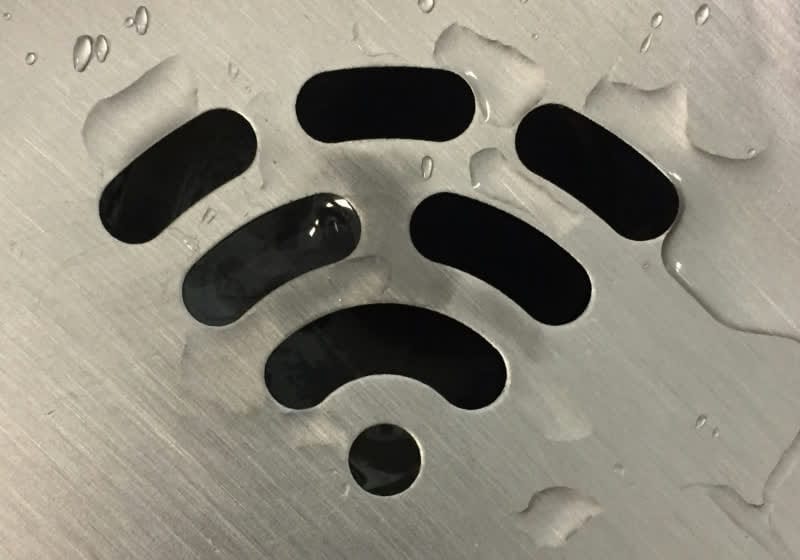
Wi-fi 7 is expected to bring all — Wi-Fi 7 is set to revolutionize wireless networking with significant advancements, but it may not fully meet expectations in certain critical areas..
Wi-fi 7 Is Expected To Bring All
Wi-Fi 7 is set to revolutionize wireless networking with significant advancements, but it may not fully meet expectations in certain critical areas.
Understanding Wi-Fi 7: The Next Generation of Wireless Technology
Wi-Fi 7, officially designated as IEEE 802.11be, represents the next iteration in wireless networking standards. Following the success of Wi-Fi 6 (802.11ax), which has already made a considerable impact in the market, Wi-Fi 7 is expected to introduce a multitude of enhancements in terms of speed, capacity, and overall efficiency. However, it is essential to recognize that there are specific areas where the anticipated improvements may not meet user expectations.
The Evolution of Wi-Fi Standards
To fully appreciate the significance of Wi-Fi 7, it is helpful to explore the evolution of Wi-Fi standards over the years. Each generation of Wi-Fi has brought substantial improvements in performance, reliability, and user experience.
– **Wi-Fi 4 (802.11n)**: Introduced MIMO (Multiple Input Multiple Output) technology, which allowed multiple antennas to send and receive data simultaneously, boosting speeds and range.
– **Wi-Fi 5 (802.11ac)**: Enhanced throughput significantly, particularly in the 5 GHz band, and introduced features like MU-MIMO (Multi-User MIMO) to better manage multiple connections.
– **Wi-Fi 6 (802.11ax)**: Brought innovations such as Orthogonal Frequency Division Multiple Access (OFDMA) and Target Wake Time (TWT), which improved performance in dense environments and extended battery life for connected devices.
With each iteration, the focus has been on enhancing user experience, particularly as the number of connected devices continues to grow. Wi-Fi 7 builds upon the innovations of its predecessors, promising to further improve the user experience in increasingly connected environments.
Key Improvements Expected with Wi-Fi 7
Wi-Fi 7 aims to deliver several notable advancements over Wi-Fi 6, which include:
- Increased Channel Bandwidth: Wi-Fi 7 is expected to support channel bandwidths of up to 320 MHz, effectively doubling the 160 MHz available with Wi-Fi 6. This increase allows for more data to be transmitted simultaneously, thereby enhancing overall network capacity.
- Higher Maximum Throughput: The maximum throughput of Wi-Fi 7 is projected to reach up to 46 Gbps, significantly surpassing the 9.6 Gbps limit of Wi-Fi 6. This improvement will be particularly advantageous for data-intensive applications such as 4K and 8K streaming, virtual reality experiences, and online gaming.
- Utilization of New Bands: Wi-Fi 7 is set to leverage the 6 GHz band, which was recently made available for unlicensed use in many regions. This additional spectrum will help alleviate congestion on existing bands, leading to improved performance in crowded environments.
Enhanced User Experiences
The anticipated improvements in Wi-Fi 7 are expected to create better user experiences across various sectors. For instance, in the realm of online gaming, the increased throughput and reduced latency could significantly enhance gameplay, making it more immersive. Similarly, for businesses relying on high-definition video conferencing tools, the enhanced bandwidth will facilitate smoother and more reliable connections.
What Wi-Fi 7 May Not Improve
Despite the promising advancements, there are specific areas where Wi-Fi 7 may not deliver the expected improvements:
- Backward Compatibility: While Wi-Fi 7 is constructed upon the foundation of previous standards, its backward compatibility may be limited. This limitation implies that not all devices supporting Wi-Fi 6 or earlier versions will fully benefit from the new features of Wi-Fi 7, potentially leading to a fragmented user experience.
- Range Limitations: Although the increased bandwidth and throughput are noteworthy, the effective range of Wi-Fi 7 may not see significant enhancements over Wi-Fi 6. The technology still relies on the same principles of radio frequency, which can be affected by physical barriers and distance, limiting its effectiveness in larger spaces.
- Cost of Implementation: As with any new technology, the financial implications of upgrading to Wi-Fi 7 may pose a concern for both consumers and businesses. The necessity for new hardware that supports the latest standard could lead to hesitance in adoption, particularly in budget-conscious environments.
Market Readiness and Adoption Challenges
The rollout of Wi-Fi 7 is expected to be gradual, with manufacturers and service providers needing time to develop and deploy compatible devices. Early adopters may face challenges related to the cost of upgrading existing infrastructure, which could hinder widespread adoption in the short term.
Businesses, in particular, may need to evaluate whether the benefits of upgrading outweigh the costs, especially in sectors where budget constraints are a significant factor. The transition to Wi-Fi 7 will require careful planning and consideration, particularly for organizations heavily reliant on stable and efficient internet connectivity.
Regulatory Considerations
The introduction of Wi-Fi 7 will also depend on regulatory approvals in various regions. The use of the 6 GHz band for unlicensed applications has been a significant step forward, but its adoption will vary by country. Regulatory bodies must ensure that the deployment of Wi-Fi 7 does not interfere with existing services and maintains the integrity of the spectrum.
Conclusion: The Future of Wi-Fi Technology
Wi-Fi 7 is poised to revolutionize the wireless networking landscape with its advancements in channel bandwidth, maximum throughput, and utilization of new bands. However, consumers and businesses should remain cognizant of the limitations that may accompany this new technology, particularly regarding backward compatibility, range, and cost.
As the rollout of Wi-Fi 7 progresses, it will be essential to evaluate its real-world performance and benefits compared to its predecessor. The introduction of Wi-Fi 7 marks a significant milestone in the evolution of wireless technology. Its potential to enhance connectivity and support an increasing number of devices in our daily lives cannot be understated.
However, stakeholders must approach the transition with a clear understanding of both the opportunities and challenges that lie ahead. As the landscape of wireless networking continues to evolve, the focus will remain on delivering reliable, high-speed internet access to meet the growing demands of consumers and businesses alike.
Source: Original reporting
Further reading: related insights.
Was this helpful?
Last Modified: August 18, 2025 at 2:19 pm
1 views















